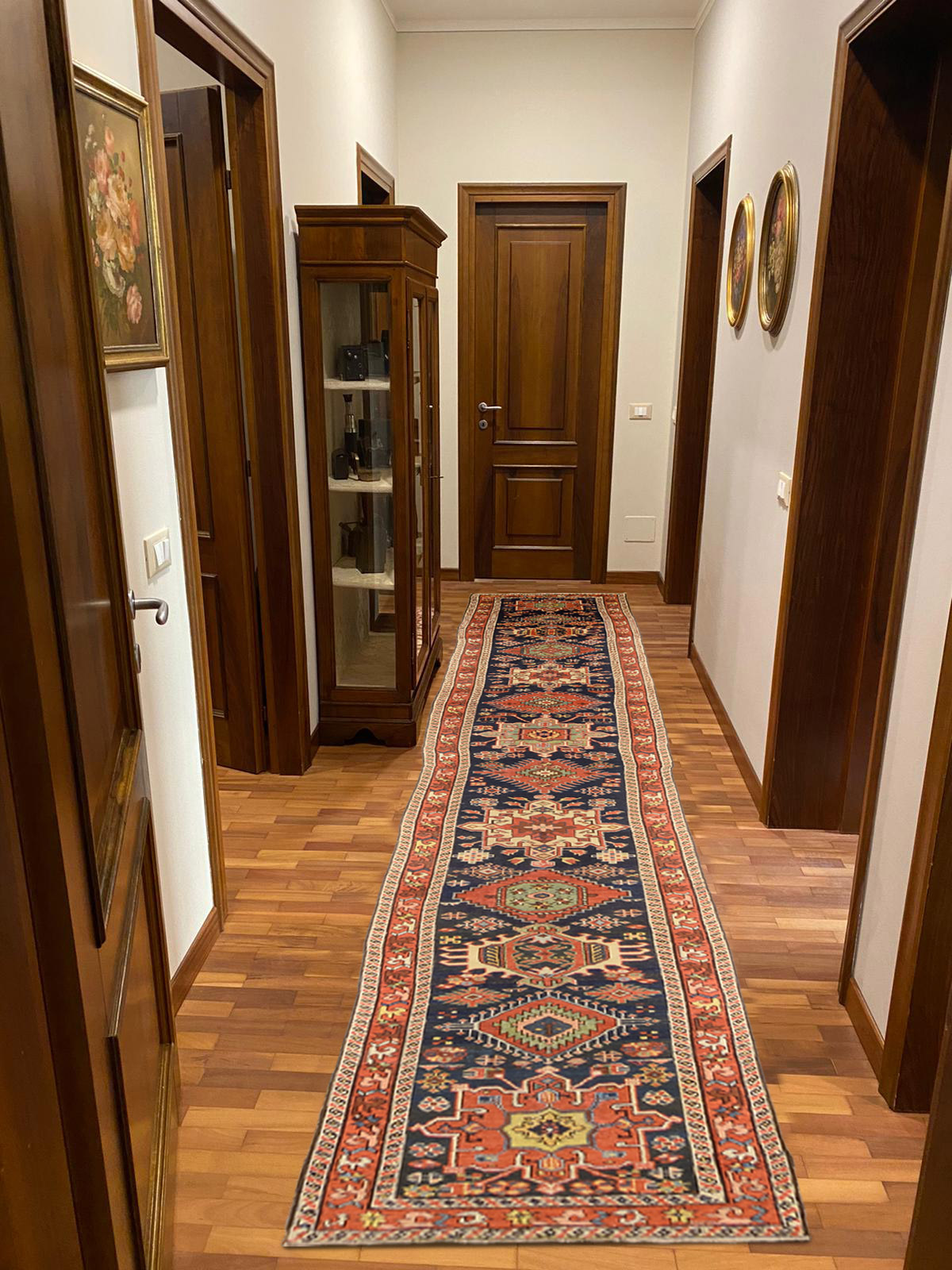code: 9126
type: persian carpets
collection: antique persian carpets
origin: iran
dimensions 77 x 519 cm
2' 6" x 17' 0"
2' 6" x 17' 0"
€3.442,62
$3,786.89
UE Citizens + Italian Vat Tax (22%)UE Companies Italian Vat Tax Free
Available from:
Morandi Tappeti
Condizione: Antico
In stock! Ordina Ora!
This carpet is in Italy - Castelvetro store
Ships in week
Ships in week
Really difficult to find such a tight fit in a gallery as long as this one. As you can see from the photograph, the carpet is crooked, in some places narrower in others wider. By hand knotting and inserting the wefts manually, beating them with the iron comb as a tradition at the time of knotting (1905/1915), it was practically impossible to obtain a perfectly squared carpet. Now we have to consid...leggi tuttoer what is the most sought after aspect in a carpet: This is a vintage piece with an undisputed charm, geometric, hand-spun wools, vegetable colors, a little wrong size that cannot be found, great price.
More info »
category: persian carpets
The Persian carpet is the carpet by definition, the best known and appreciated among the hand-knotted carpets. Generally named after the city or area of knotting. Kirman carpet, Kashan, Tabriz, Isfahan, Serapi, Senneh, Bakhtiari, Saruk, Sultanabad, Mahal, Ferahan, Mishan, Josan, Bidjar, Malayer, Hamadan
collection: antique persian carpets
We define the ancient carpets before the war of 1915/18. They have hand-spun wool dyed with vegetable colors, animals or minerals. In some rare cases have been used, limited to certain colors, the first aniline dyes. Saruk rugs, knotted with vegetable colors until 1930, are included in this group
The Persian carpet is the carpet by definition, the best known and appreciated among the hand-knotted carpets. Generally named after the city or area of knotting. Kirman carpet, Kashan, Tabriz, Isfahan, Serapi, Senneh, Bakhtiari, Saruk, Sultanabad, Mahal, Ferahan, Mishan, Josan, Bidjar, Malayer, Hamadan
collection: antique persian carpets
We define the ancient carpets before the war of 1915/18. They have hand-spun wool dyed with vegetable colors, animals or minerals. In some rare cases have been used, limited to certain colors, the first aniline dyes. Saruk rugs, knotted with vegetable colors until 1930, are included in this group







Your comment is awaiting moderation.